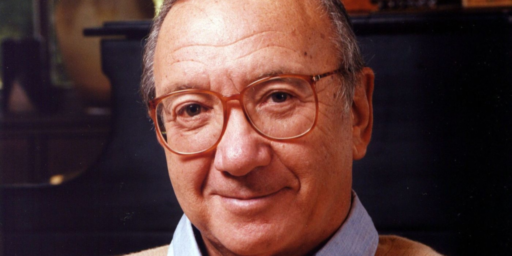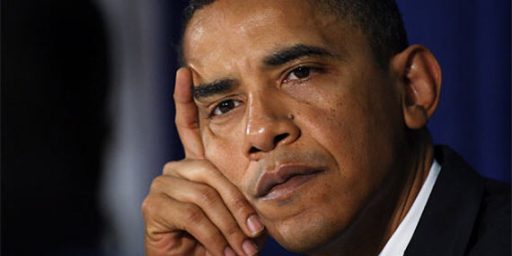Scientists Discover Evil
For the Worst of Us, the Diagnosis May Be ‘Evil’ (NYT rss)
Predatory killers often do far more than commit murder. Some have lured their victims into homemade chambers for prolonged torture. Others have exotic tastes – for vivisection, sexual humiliation, burning. Many perform their grisly rituals as much for pleasure as for any other reason. Among themselves, a few forensic scientists have taken to thinking of these people as not merely disturbed but evil. Evil in that their deliberate, habitual savagery defies any psychological explanation or attempt at treatment. Most psychiatrists assiduously avoid the word evil, contending that its use would precipitate a dangerous slide from clinical to moral judgment that could put people on death row unnecessarily and obscure the understanding of violent criminals. Still, many career forensic examiners say their work forces them to reflect on the concept of evil, and some acknowledge they can find no other term for certain individuals they have evaluated.
In an effort to standardize what makes a crime particularly heinous, a group at New York University has been developing what it calls a depravity scale, which rates the horror of an act by the sum of its grim details. And a prominent personality expert at Columbia University has published a 22-level hierarchy of evil behavior, derived from detailed biographies of more than 500 violent criminals. He is now working on a book urging the profession not to shrink from thinking in terms of evil when appraising certain offenders, even if the E-word cannot be used as part of an official examination or diagnosis. “We are talking about people who commit breathtaking acts, who do so repeatedly, who know what they’re doing, and are doing it in peacetime” under no threat to themselves, said Dr. Michael Stone, the Columbia psychiatrist, who has examined several hundred killers at Mid-Hudson Psychiatric Center in New Hampton, N.Y., and others at Creedmoor Psychiatric Center in Queens, where he consults and teaches. “We know from experience who these people are, and how they behave,” and it is time, he said, to give their behavior “the proper appellation.”
Western religious leaders, evolutionary theorists and psychological researchers agree that almost all human beings have the capacity to commit brutal acts, even when they are not directly threatened. In Dr. Stanley Milgram’s famous electroshock experiments in the 1960’s, participants delivered what they thought were punishing electric jolts to a fellow citizen, merely because they were encouraged to do so by an authority figure as part of a learning experiment.
[…]
“Evil is endemic, it’s constant, it is a potential in all of us. Just about everyone has committed evil acts,” said Dr. Robert I. Simon, a clinical professor of psychiatry at Georgetown Medical School and the author of “Bad Men Do What Good Men Dream.” Dr. Simon considers the notion of evil to be of no use to forensic psychiatry, in part because evil is ultimately in the eye of the beholder, shaped by political and cultural as well as religious values. The terrorists on Sept. 11 thought that they were serving God, he argues; those who kill people at abortion clinics also claim to be doing so. If the issue is history’s most transcendent savages, on the other hand, most people agree that Hitler and Pol Pot would qualify. “When you start talking about evil, psychiatrists don’t know anything more about it than anyone else,” Dr. Simon said. “Our opinions might carry more weight, under the patina or authority of the profession, but the point is, you can call someone evil and so can I. So what? What does it add?”
When science merely confirms that which we’ve always known to be true, probably not much.






Sounds to me like certain people are awakening to the fact some folks need killin’.
FYI:
“In an effort to standardize what makes a crime particularly heinous, a group at New York University has been developing what it calls a depravity scale, which rates the horror of an act by the sum of its grim details.”
This is wrong. The guy who’s doing this is Dr. Michael Welner, not a group from NYU. And it’s an inaccurate statement… b/c he’s actually looking to define via social consensus what aspects of a criminal act make it depraved – a word already used in most state courts (example – the “heinous, atrocious, and cruel” statute can raise a sentence to death, but the words are arbitrarily and subjectively used). I took the online survey months ago, at http://www.depravityscale.org, and I thought it was really interesting… especially b/c it doesn’t “diagnose” a person as evil – it helps define what acts would be considered to be beyond the pale, the worst of the worst, by the bulk of the population. Eh, go read on the web page, they can explain it better than I can.
Yea, I took the survey too. I really thought it was insightful.
That NY Times article really seemed to miss the point about Dr. Welner’s research. I’ve watched him on TV explain it, and how the Times represented it is not the same as how Dr. Welner explains it. Sad really.
Anyway, I’m with Nicole. Check out the site.